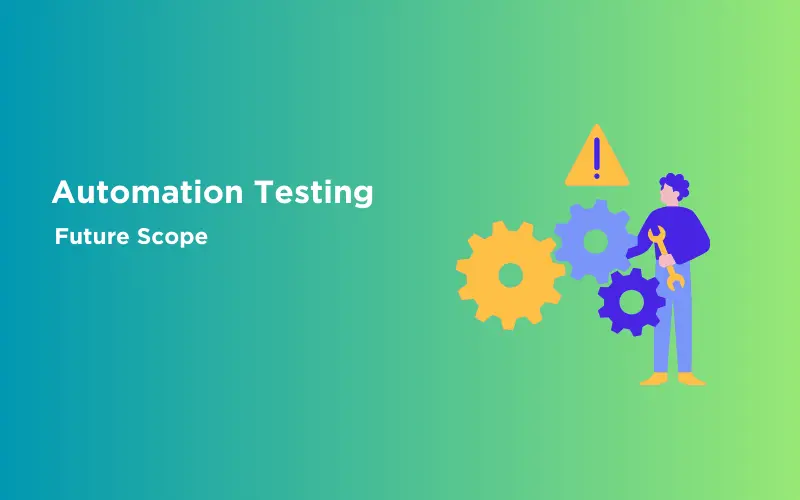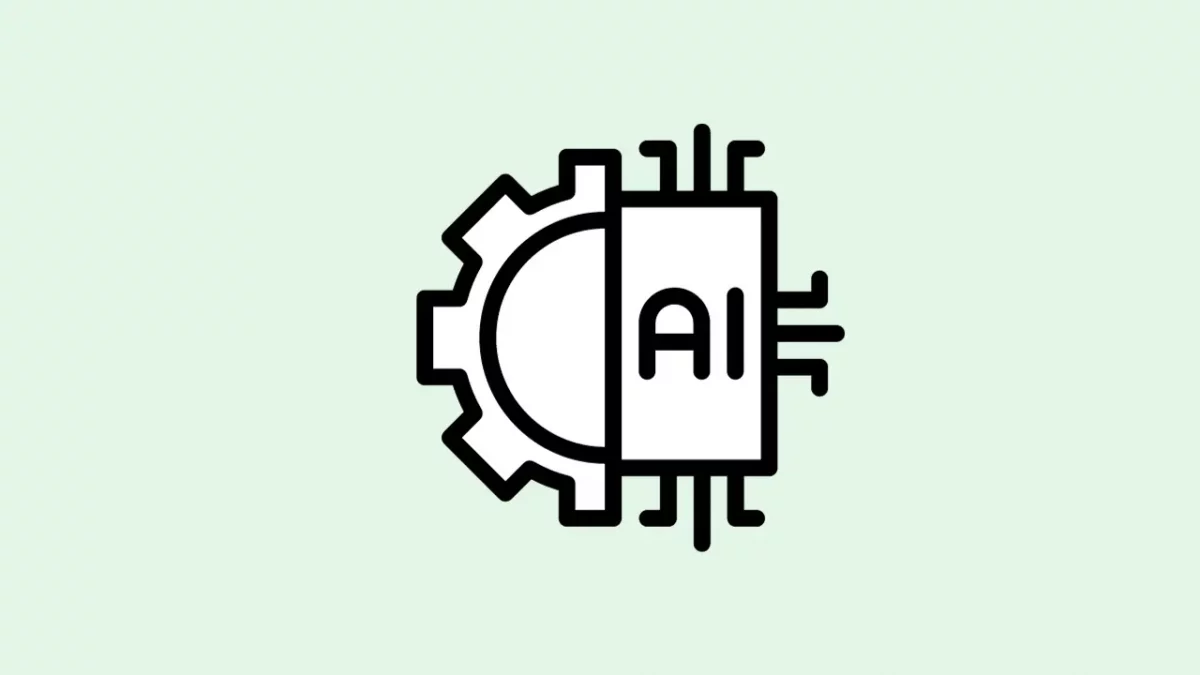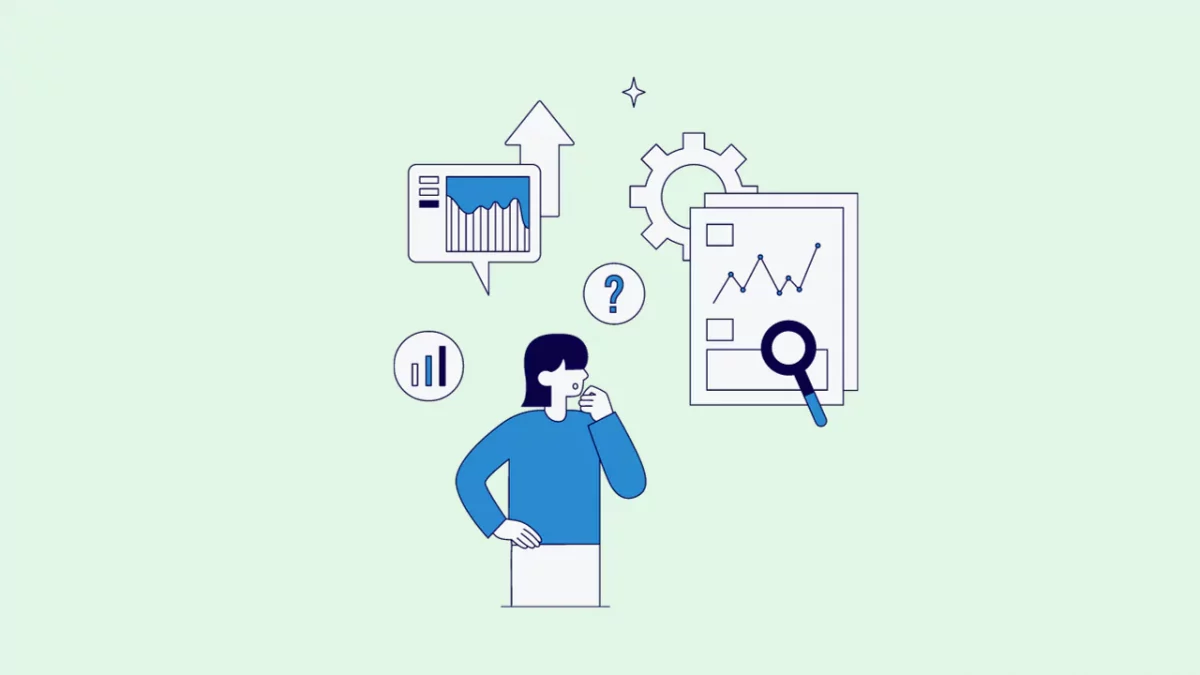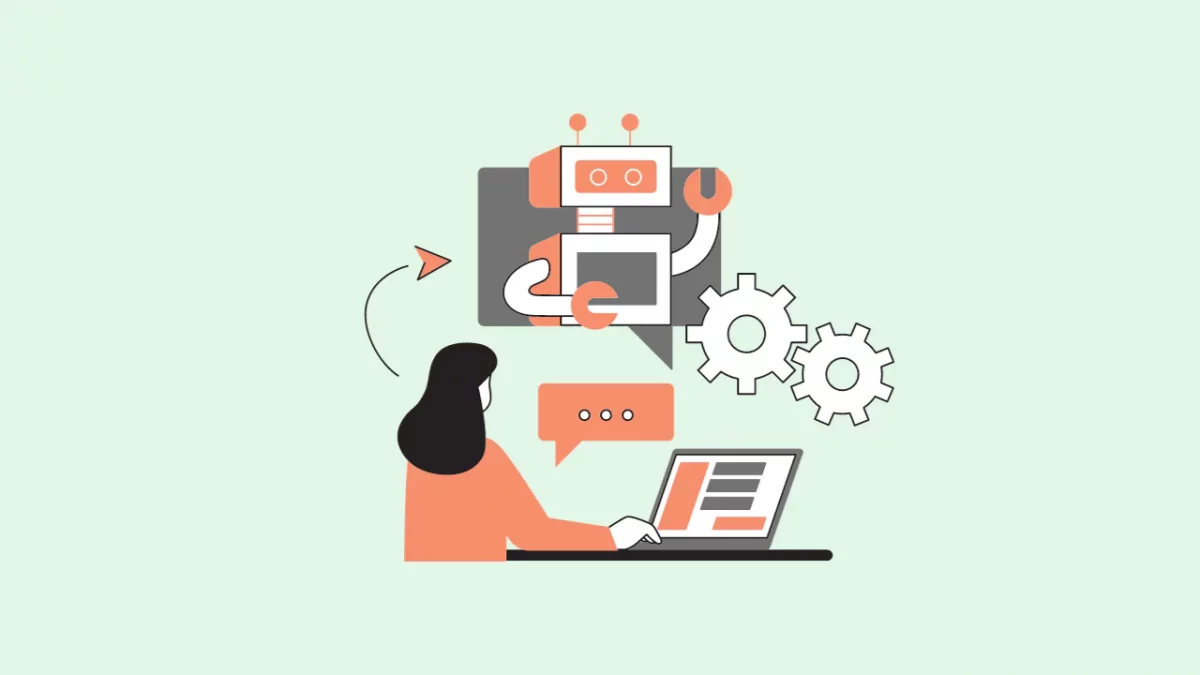
The Future Scope of Automation Testing in 2025
Mar 13, 2025 8 Min Read 15008 Views
(Last Updated)
We all have experienced an increase in technological advancements in recent years. Automation testing is one of them which is a mandated step in SDLC to avoid software performance issues. The career in automation testing is growing and has also become very demanding and high-paying.
This blog talks about automation testing and its future scope. Also, what kind of advancements it has brought? Moving towards the end, we’ll be understanding how automation testing is going to help testers in the near future. Let’s move ahead to understand it completely:
Table of contents
- Scope of Automation Testing in 2025
- I. Evolution of Automation Testing
- Key Milestones and Shifts in Testing Methodologies
- Adaptation to the Changing Software Development Landscape
- II. Current Landscape of Automation Testing
- Wide Adoption
- Tool Ecosystem
- Agile Integration
- DevOps Harmony
- CI/CD Pipelines
- Test Data Management
- Integration of Automation into Agile, DevOps, and CI/CD Pipelines
- III. Trends Shaping Automation Testing in 2025
- AI and Machine Learning in Testing
- Test Automation for New Technologies
- Shift-Left and Shift-Right Testing
- Codeless and Low-Code Automation
- IV. Benefits of Automation Testing in 2025
- Improved Efficiency and Speed
- Enhanced Test Coverage
- Cost Savings and ROI
- Focus on Complex Testing Scenarios
- V. Challenges and Considerations
- Test Maintenance
- Skill Upgradation
- Balancing Automation and Manual Testing
- VI. Future Outlook
- AI-Powered Autonomous Testing
- Quantum Computing and Testing Complexity
- Robotic Process Automation (RPA) Integration
- Ethical and Responsible Testing
- Test Data Synthesis
- Advanced Test Reporting and Visualization
- Progressive Automation Frameworks
- Enhanced Security Testing
- Inclusive and Accessible Automation
- Continuous Improvement and Learning
- Conclusion
- FAQs
- What is automation testing and why is it important in 2025?
- How does automation testing keep up with new technologies like AI and IoT?
- Can automation testing completely replace manual testing?
Scope of Automation Testing in 2025
Let’s go through each pointer and understand about the scope of automation testing thoroughly:
I. Evolution of Automation Testing

In the beginning, testing software was a hands-on job done entirely by people. This process was called manual testing. Testers had to go through each function of the software, they used to check if there was any issue and look for bugs. But as software grew more complex, manual testing became slow and sometimes missed tracking issues.
The idea of using computers to help with testing emerged in the 1970s. Testers started writing scripts, which are like sets of instructions, to automate some testing tasks. These scripts could repeat the same actions over and over, which saved time and found more bugs.
Before we proceed further, it’s essential to have a solid foundation in automation testing principles and selenium basics. If you’re eager to dive deep into software testing, consider joining GUVI’s Selenium Automation Testing Course. In this program, you’ll learn the fundamentals of Selenium, Python, Java, Jenkins, JMeter, API Testing, and more. Gain hands-on experience with industry-standard tools and techniques to get into a professional career focusing on the quality of Product & Process development.
Also, if you want to explore Automation Testing with Python through a Self-paced course, try GUVI’s Selenium Automation with Python certification course.
Key Milestones and Shifts in Testing Methodologies
Record and Playback: In the early days, testers recorded their actions as they used the software. Then, they could replay these actions to see if the software responded correctly. This was a big leap from pure manual testing.
Functional and Regression Testing: As software became larger and more complex, testers focused on automating functional tests. These tests checked if the software performed its expected functions correctly. Later, the idea of regression testing emerged. This involved re-running tests to ensure that new changes didn’t break existing functions.
Data-Driven and Keyword-Driven Testing: Testers started separating test data (like inputs and expected outputs) from test scripts. This made it easier to change test data without modifying the scripts. Keyword-driven testing allowed testers to use simple keywords to write tests, making test creation faster.
Test Automation Frameworks: Frameworks are blueprints that help structure and organize automated tests. They made automation more scalable, reusable, and easier to manage.
Shift Towards Agile and DevOps: The Agile methodology brought a shift in software development. Development cycles became faster, which required testing to keep up. Automation played a crucial role in this by allowing frequent and quick tests.
Adaptation to the Changing Software Development Landscape
As software development evolved, automation testing adapted to stay relevant:
Continuous Integration/Continuous Deployment (CI/CD): Automation became essential in CI/CD pipelines. Developers could write code, and automated tests would quickly check if the code worked with the existing software.
Agile Practices: With Agile, software was developed in smaller increments. Automated tests fit well because they could be created quickly and run frequently to ensure new changes didn’t break existing functionality.
Complex Applications: Software applications became more intricate, involving multiple platforms and devices. Automation stepped in to efficiently test these scenarios across different environments.
Shift-Left Testing: Automation moved to test earlier in the development process. Instead of just catching bugs at the end, it started finding issues early, saving time and costs.
Automation testing has come a long way from manual testing. It’s like a helpful digital assistant that handles repetitive tasks quickly and accurately. Over time, it has adopted new methods and techniques to match the changing needs of software development. This evolution has been driven by the need for faster, more reliable testing in an era of rapid technological advancement.
II. Current Landscape of Automation Testing

In 2025, automation testing solidified its position as a fundamental pillar of modern software development. Organizations across industries have embraced automation to streamline their testing processes and deliver high-quality software products at an unprecedented speed. The following aspects characterize the current state of automation testing:
Wide Adoption
Automation testing is no longer a luxury; it’s a necessity. Almost every software development project incorporates some level of automation, whether it’s for unit testing, integration testing, or end-to-end testing.
Tool Ecosystem
A robust ecosystem of automation testing tools is available, catering to various needs and preferences. Automation Tools like Selenium, Appium, and Cypress are commonly used for web and mobile application testing, while others specialize in API testing, load testing, and more.
Agile Integration
Agile methodologies continue to dominate software development, and automation testing seamlessly integrates with Agile practices. Frequent iterations and shorter development cycles demand rapid testing, which automation provides.
DevOps Harmony
DevOps practices emphasize collaboration between development and operations teams. Automation testing plays a pivotal role in achieving the continuous testing and continuous feedback required for successful DevOps implementation.
CI/CD Pipelines
Continuous Integration/Continuous Deployment (CI/CD) pipelines are incomplete without automation testing. Automated tests are executed every time code changes are made, ensuring that new features or changes don’t introduce regressions.
Test Data Management
Automation testing is enhancing test data management. Automated tests can create, manipulate, and reset test data, making tests repeatable and consistent.
Integration of Automation into Agile, DevOps, and CI/CD Pipelines
Agile Integration: Agile development emphasizes delivering functional software quickly through iterative cycles. Automation testing aligns perfectly with Agile principles. Short iterations call for swift and effective testing, which automation facilitates. Automated tests can be run frequently to ensure the software remains stable and functional.
DevOps Efficiency: DevOps thrives on automation and collaboration. Automated tests ensure that code changes are validated thoroughly before deployment, reducing the likelihood of errors reaching production. This enhances the efficiency of DevOps practices by minimizing downtime and boosting the reliability of software releases.
CI/CD Pipelines: CI/CD pipelines automate the software delivery process. Automation testing is a crucial checkpoint in these pipelines. Automated tests provide fast feedback to developers, allowing them to catch and fix issues early in the development cycle. This accelerates the overall delivery process and ensures that only high-quality code reaches production.
Automation testing has seamlessly integrated into the heart of software development methodologies. It is the driving force behind Agile, DevOps, and CI/CD practices, enabling teams to consistently produce reliable, high-quality software while maintaining speed and efficiency. As we move forward, the role of automation in these methodologies is expected to become even more entrenched, further solidifying its position as an indispensable component of modern software engineering.
III. Trends Shaping Automation Testing in 2025
AI and Machine Learning in Testing

Artificial Intelligence (AI) and Machine Learning (ML) have revolutionized automation testing by infusing it with intelligence and adaptability.
Test Case Generation: AI and ML algorithms can analyze application behavior and generate test cases automatically. This reduces manual effort and ensures that a wider range of scenarios is covered.
Predictive Analysis: These technologies analyze historical testing data to predict areas of potential defects, guiding testers’ focus and improving the efficiency of testing efforts.
Intelligent Test Execution: AI-driven algorithms determine which test cases are most relevant for a particular code change. This selective test execution optimizes testing time while maintaining thorough coverage.
Benefits: AI and ML enhance test coverage by identifying complex scenarios that might be overlooked manually. Faster defect identification, facilitated by intelligent analysis, leads to quicker bug resolution and an overall increase in software quality.
Test Automation for New Technologies
Emerging Technologies: The rise of new technologies like the Internet of Things (IoT), blockchain, and AI-driven applications presents unique testing challenges due to their intricate interconnections and unconventional behaviors.
Challenges: IoT devices have diverse hardware and software combinations, making testing complex. Blockchain’s decentralized nature and security considerations require rigorous testing. AI-driven applications pose challenges due to their self-learning nature and unpredictability.
Automation’s Role: Automation testing is crucial for these technologies, as it enables systematic and repeatable testing across various scenarios and devices. Automation ensures that the complexities of these technologies are thoroughly tested, reducing the risk of defects in production.
Shift-Left and Shift-Right Testing
Shift-Left Testing: This concept involves moving testing activities earlier in the development process. Automation facilitates shift-left by enabling developers to run automated unit tests during coding, catching issues at their inception.
Shift-Right Testing: Shift-right extends testing into the post-deployment phase, monitoring software behavior in real-world conditions. Automation aids shift-right by enabling continuous monitoring and capturing performance issues in production.
Automation’s Role: Automation serves both shift-left and shift-right approaches. In shift-left, automated unit tests provide rapid feedback to developers, preventing defects from progressing. In shift-right, automated monitoring ensures the software’s ongoing health and performance.
Codeless and Low-Code Automation
Codeless Platforms: Codeless automation tools allow testers to create and manage automated tests without writing code. Testers can use visual interfaces and predefined components to assemble test cases.
Low-Code Platforms: Similar to codeless, low-code platforms offer a middle ground. Testers can use simplified scripting, making automation accessible to those with limited coding experience.
Empowering Non-Technical Testers: Codeless and low-code automation democratizes testing by enabling non-technical testers to contribute to automation efforts. This reduces the reliance on skilled automation engineers.
Advantages: These platforms expedite test creation, reduce the learning curve, and increase collaboration between technical and non-technical team members. They also make automation more scalable and adaptable.
In 2025, these trends are shaping the evolution of automation testing, driving it toward smarter, more efficient, and broader coverage while adapting to the demands of innovative technologies and testing methodologies.
IV. Benefits of Automation Testing in 2025

Improved Efficiency and Speed
Faster Test Execution: Automation drastically reduces the time needed to run tests. Computers can execute tests much faster than humans, leading to quicker feedback on the software’s functionality and potential defects.
Quicker Feedback: Automation allows tests to be run as soon as new code is written. This provides immediate feedback to developers, enabling them to address issues early in the development cycle.
Parallel Execution and Distributed Testing: Automation can execute multiple tests simultaneously (parallel execution) and across different machines (distributed testing). This dramatically speeds up testing processes by utilizing available computing resources effectively.
Enhanced Test Coverage
Broader Test Coverage: Automation testing can execute a large number of test cases quickly and repeatedly. This means more test scenarios can be covered in less time, ensuring comprehensive testing of various functionalities.
Cross-Platform and Cross-Device Testing: Automation can simulate interactions on various platforms (like Windows, macOS, Linux) and devices (smartphones, tablets, desktops). This ensures that software works consistently across different environments, enhancing user experience.
Cost Savings and ROI
Minimized Manual Effort: Automation reduces the need for repetitive manual testing tasks. Testers can focus on more critical aspects of testing, while automated scripts handle routine checks.
Reduced Human Errors: Automation eliminates human errors caused by fatigue, oversight, or inconsistency in test execution. This reduces the risk of defects slipping into the final product.
Long-Term ROI: Although there is an initial investment in setting up automation, the long-term benefits outweigh the costs. Automation’s efficiency leads to quicker releases, fewer defects in production, and ultimately higher customer satisfaction.
Focus on Complex Testing Scenarios
Thorough Testing: Automation excels in testing complex scenarios that involve multiple interactions, calculations, and data manipulations. These scenarios are challenging to replicate manually and require precise and repetitive testing.
Significance Across Industries: Industries like finance, healthcare, and automotive rely on software to perform complex functions with high accuracy. Automation ensures that even the most intricate scenarios are thoroughly tested, reducing risks associated with critical applications.
In 2025, automation testing will stand as a cornerstone of quality assurance, addressing challenges in software development with remarkable efficiency. Its ability to execute tests quickly, cover diverse scenarios, save costs, and handle complex scenarios positions it as a catalyst for delivering reliable software across industries.
V. Challenges and Considerations

Test Maintenance
Challenge of Script Maintenance: As software evolves, automation scripts need to be updated to match the changes. This could include modifying scripts to reflect new features, UI changes, or functional enhancements.
Strategies for Test Maintenance:
Version Control: Using version control systems helps track changes in scripts and ensures that the most recent version is used.
Regular Script Review: Scheduled reviews of automation scripts help identify outdated or redundant parts that can be updated or removed.
Modular and Reusable Scripts: Creating scripts in a modular and reusable manner reduces the impact of changes on multiple scripts when an application evolves.
Skill Upgradation
Continuous Learning: Automation technologies are evolving rapidly. Testers need to constantly upgrade their skills to stay relevant and effective in their roles.
Resources for Skill Development:
Certifications: Certifications from organizations like ISTQB (International Software Testing Qualifications Board) validate expertise in automation testing.
Industry Conferences and Workshops: Attending conferences and workshops provides exposure to the latest trends and tools in automation testing.
Balancing Automation and Manual Testing
Importance of Balance: While automation is powerful, there are scenarios where manual testing remains essential. Human intuition, exploratory testing, and creative thinking are aspects that automation cannot replicate.
Scenarios for Manual Testing:
Usability Testing: Assessing user experience, intuition, and emotional responses often requires human judgment.
Exploratory Testing: Testers can explore the application to find unexpected issues that automated tests might miss.
Ad-Hoc Testing: When a quick evaluation of a specific area is needed, manual testing is efficient.
Early Stages of Development: In the early stages, when frequent changes occur, manual testing can be more practical.
In the dynamic world of automation testing, challenges like maintaining scripts, keeping skills updated, and finding the right balance between automation and manual testing are critical considerations. Successfully addressing these challenges ensures that automation remains a reliable and efficient testing approach, contributing to high-quality software delivery.
VI. Future Outlook

As we look beyond 2025, the trajectory of automation testing is poised to be marked by transformative changes, driven by emerging technologies and evolving methodologies. Here are some potential directions that automation testing could take:
AI-Powered Autonomous Testing
AI’s role in testing will likely evolve from assisting testers to autonomous testing. AI algorithms could independently create, execute, and analyze test cases, adapting to changing requirements. This could revolutionize testing efficiency, accuracy, and adaptability.
Quantum Computing and Testing Complexity
Quantum computing’s emergence might be a game-changer in testing complex scenarios that are currently challenging to simulate. It could handle intricate calculations and simulations faster, enabling more comprehensive testing.
Robotic Process Automation (RPA) Integration
Automation testing might extend beyond software to test integrated systems involving both software and RPA. This integration would address end-to-end business processes and enhance quality assurance across organizational workflows.
Ethical and Responsible Testing
With increased reliance on AI, there will be a growing need for testing algorithms for fairness, bias, and ethical concerns. Automation testing frameworks may evolve to incorporate these evaluations.
Test Data Synthesis
Automation might utilize AI to generate synthetic test data that closely resembles real-world scenarios. This would facilitate more comprehensive testing without exposing sensitive data.
Advanced Test Reporting and Visualization
Test reporting could become more intuitive, offering visualizations that help stakeholders understand the impact of testing on software quality. Insights derived from large datasets could guide decision-making.
Progressive Automation Frameworks
Frameworks could adapt to support hybrid testing approaches, where manual and automated tests seamlessly coexist. This would accommodate the need for human intuition and creativity alongside automation’s efficiency.
Enhanced Security Testing
Automation testing will play a vital role in ensuring the security of software applications. Advanced automation tools might simulate complex security attacks to identify vulnerabilities in systems.
Inclusive and Accessible Automation
Efforts may focus on making automation more inclusive by designing tools that are user-friendly and accessible to testers with diverse backgrounds, abilities, and levels of technical expertise.
Continuous Improvement and Learning
Automation testing will continue to evolve alongside the software it tests. Teams will embrace a culture of continuous learning and improvement, adopting new tools and methodologies to match the changing software landscape.
Incorporating new technologies like AI, quantum computing, RPA, and ethical considerations, the trajectory of automation testing beyond 2025 is poised to enhance testing accuracy, efficiency, and coverage. As the boundaries between human and machine interaction blur, automation testing will remain a cornerstone of quality assurance, facilitating the delivery of reliable and innovative software solutions.
Enroll in GUVI’s Selenium Automation Testing Course to get your software testing career off to a great start. Here, you can master in-demand skills like Selenium, Python, Java, Jenkins, JMeter, API Testing, and more.
Alternatively, if you want to explore Automation Testing with Python through a Self-paced course, try GUVI’s Selenium Automation with Python certification course.
Conclusion
We’ve explored how automation testing helps in building error-free software. We learned that automation testing has come a long way from when people did all the testing by hand. We also saw how automation testing is super important in today’s world.
It fits perfectly with how software is made and helps catch problems quickly. Automation testing is like a superhero that makes sure software is good before it reaches us.
Remember, automation testing is here to stay. As technology keeps growing, automation testing will keep making sure the software we use is awesome, efficient, and free of problems. It’s like having a trusted friend who always has your back, ensuring that the software you use is the best it can be. So, keep an eye on automation testing – it’s making our digital world better every day!
FAQs
Automation testing is a process where special tools and scripts are used to test computer software automatically. In 2025, software is getting more complex, and manual testing can be slow and might cause some problems.
Automation testing helps by making testing faster, more accurate, and covering a lot of different scenarios. It’s important because it ensures that software works well and is of high quality, especially in a world where technology changes quickly.
Automation testing is adapting to new technologies like AI (Artificial Intelligence) and IoT (Internet of Things). With AI, automation can predict problems before they even happen and generate tests on their own.
For IoT devices that are connected, automation can test how they work together and find issues that might not be easy to see. This way, automation keeps up with the latest tech to ensure that software works well with these new innovations.
While automation testing is super useful, it can’t completely replace manual testing. There are things humans can do that machines can’t, like using intuition to find unusual problems.
Manual testing is still needed for things like checking how easy the software is to use and exploring different scenarios. So, while automation is awesome, a mix of both automation and manual testing is the best approach for making sure software is top-notch.































Did you enjoy this article?